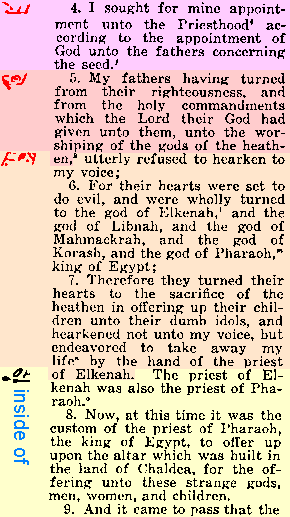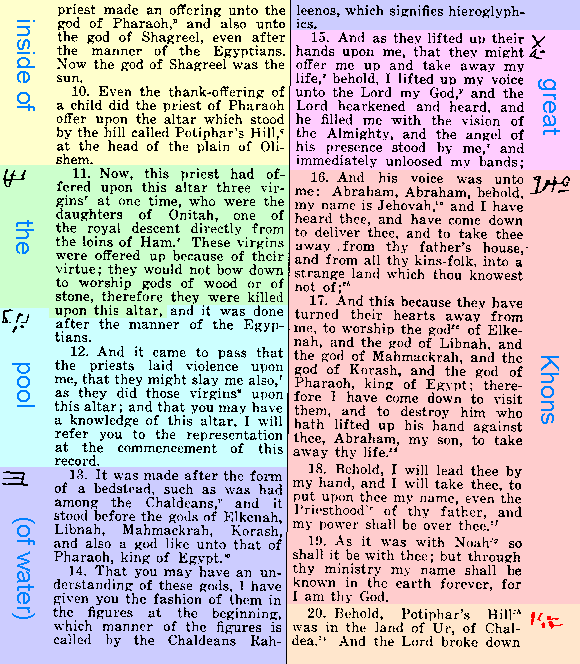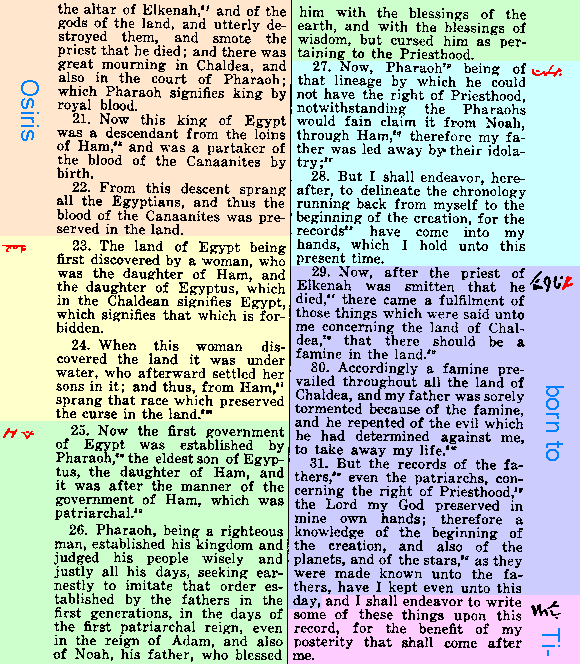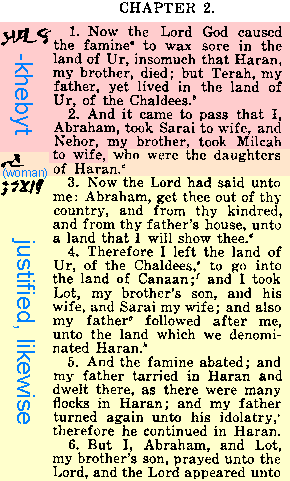



All modern scholars agree that the papyrus is a funeral document (called the Book of Breathings) for the mummy in which the papyrus was found. Similar documents are in other museums. It is a form letter in which the name of the dead person is inserted. In this case the name is "Hor", as found in the hieroglyphics to the right of the image.
In a booklet "The Book of Abraham Papyrus Found" by H. Michael Marquardt, 1975, (from which many of these illustrations were derived) he gave 5 translations of the hieratic characters. That of Grant S. Heward reads nicely and is representative:
".....to the pool of great Khensu......born to Taykhebyt justified likewise. After his arms are put over his heart and wrapped, the Book of Breathings, which was made with writing inside and out, is fastened in royal linen at the left side, in alignment with his heart. This is done at his outer wrapping. If this is made for him, then he will breathe like the souls of the gods for ever and ever."
This is totally unrelated to the words of the Book of Abraham! There are vastly fewer words in the real translation than in the Book of Abraham.
The absurd expansion of the Egyptian symbols into the Book of Abraham verses is
shown in the following. The text is from the present version of the Book of
Abraham. (The changes from the original are minor.) The symbols from Smith's
notebook are placed in the margins, like in his original. The color background
shows the English words associated with the characters. Red characters were
invented by Smith to fill the gaps in the papyrus. Proper translations of
the Egyptian symbols are also placed in the margins to show that the Book of
Abraham words have nothing to do with the Egyptian symbols.




Back, Next
Intro,
Book of Abraham,
Creation,
Origin,
Papyrus,
Meanings,
Facsimile-1,
Facsimile-2,
Facsimile-3,
other errors,
summary